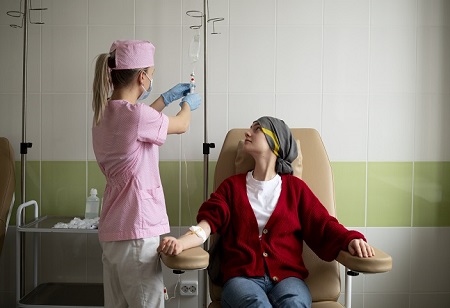India Pharma Outlook Team | Tuesday, 09 January 2024

Gerresheimer, an innovative systems and solutions provider and global partner for the pharmaceutical, biotechnology, and cosmetics industries, and Aptar Digital Health, a global expert in Software as a Medical Device (SaMD), digital Patient Support Programmes (PSPs), and disease management solutions, have collaborated to create an integrated cancer therapy solution.
As part of this collaboration, the Gx SensAir on-body drug delivery device will be connected to Aptar Digital Health's software-as-a-medical device platform to improve the treatment experience and outcomes of cancer patients.
The integrated solution aims to facilitate the onboarding of patients to new therapies, accompany them and help them better manage adverse effects, and make it easier to monitor patients remotely, ultimately improving treatment adherence and clinical outcomes, as per pharmabiz.
“Combining our efforts opens up new exciting possibilities for optimizing the respective drug therapy and improving the quality of life for cancer patients”, said Daniel Diezi, vice president digitalization & new business models at Gerresheimer. “This collaboration in oncology will lay the groundwork for Aptar Digital Health and Gerresheimer to potentially expand into other therapeutic areas in the future.”
“We are honoured to collaborate with Gerresheimer, a global industrial partner in drug delivery devices,” said Sai Shankar, president of Aptar Digital Health. “By combining our collective and proprietary expertise in device and software engineering, we believe this collaboration has the potential to deliver innovative solutions for patients, healthcare providers and the healthcare industry.”
Both businesses think that novel subcutaneous injectable devices and digital platforms can enhance the oncology patient experience. For pharmaceutical companies, this collaboration provides an opportunity to provide a patient-centric solution and address obstacles such as treatment interruptions or discontinuations caused by administration issues or unpleasant effects. It also facilitates the shift from intravenous to subcutaneous administration of cancer medications.